Colosseum, Vatican and More for a Day in Rome in 2025
Rome’s main highlights and unique glimpses in the city to see in a day in 2025

12 May 2025
Rome Travel GuideOur Tips to explore Rome by yourself in a day
Rome, the Eternal City, is a treasure trove of history, art, and culture. But with so much to see, how do you make the most of just one day in this timeless metropolis? Rome is rich in ancient ruins, world-renowned art, and shopping in bustling piazzas not to be missed. In this travel guide, we’ll share our top tips for navigating the city, ensuring you get a taste of its incredible landmarks, hidden gems, and vibrant atmosphere, all in just a day.If you want to discover and truly understand with an expert local guide the historical significance of the Colosseum, Roman Forum, Palatine Hill, Trevi Fountain, Pantheon, the Vatican Museums, and St. Peter’s Basilica, you can choose a Private Tour of Rome in a Day!
Colosseum and Rome’s Iconic Arena
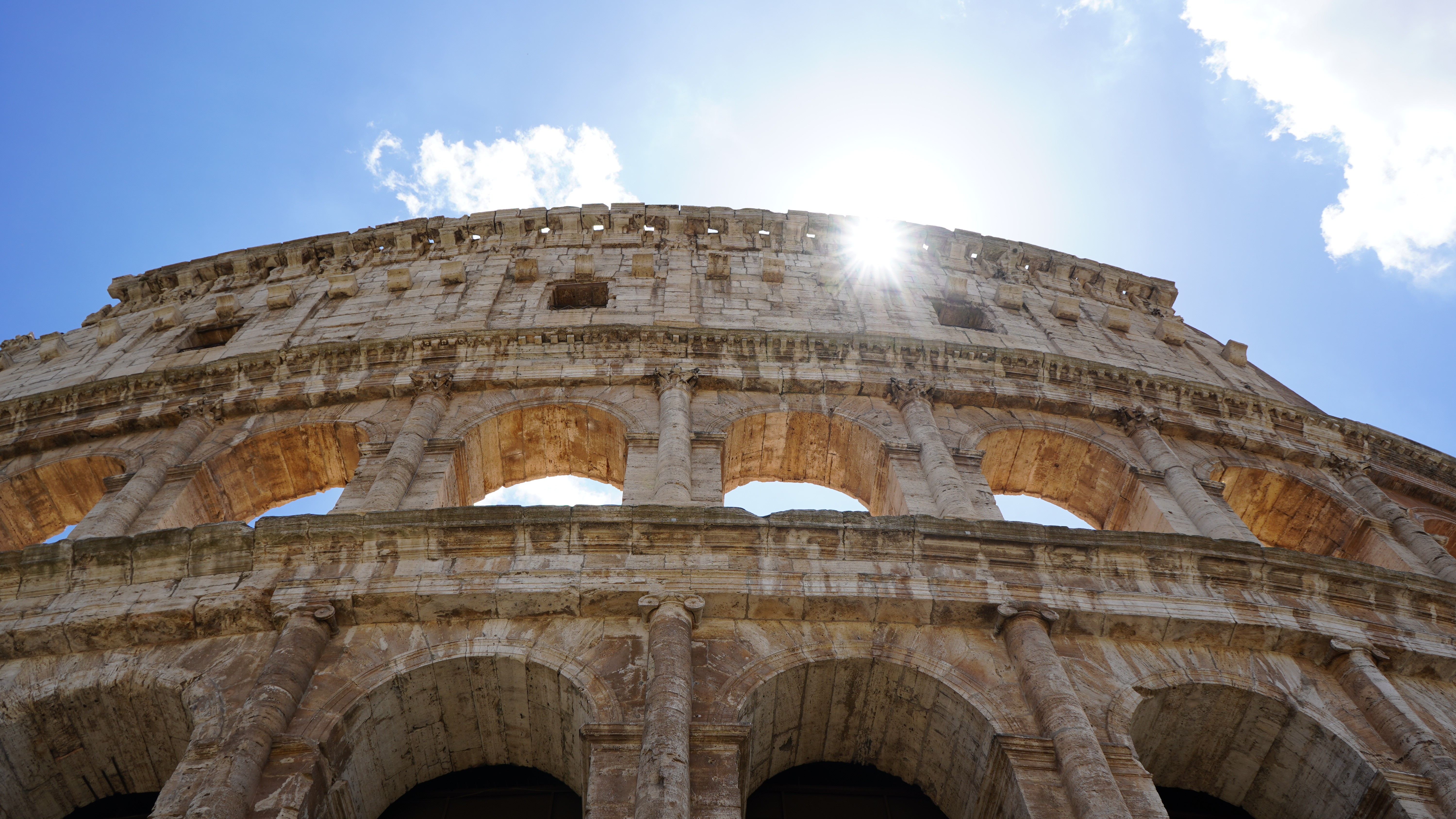
The Colosseum is a must-see for anyone in Rome for a day, offering a powerful glimpse into the city’s imperial past. Completed in 80 AD, it was the stage for grand public events like gladiator fights, animal hunts, and even mock naval battles. Inside, key highlights include the hypogeum, the underground tunnels where gladiators and animals waited before entering the arena, and the partially reconstructed floor that helps visualize how the spectacles unfolded. The seating once held over 50,000 people, arranged by social class, from emperors to ordinary citizens.
Despite centuries of damage, the Colosseum remains a striking reminder of ancient Rome’s scale, engineering, and entertainment culture, an essential stop for travelers.
The Roman Forum: the political, religious and economical center of ancient Rome
The Roman Forum is a must for anyone traveling in Rome by themselves. Once the heart of ancient Roman life, where ancient Rome’s public life unfolded, its institutions, rituals, and collective memory all centered here. The Temple of Saturn represented the Republic’s wealth and stability, while the Arch of Septimius Severus stood as a monument to imperial victories in the East, carved with triumphal reliefs. The Curia, Rome’s Senate House, still retains its structure, evoking the authority of a place where the fate of the empire was debated.
The Temple of Julius Caesar marked the site where the fallen leader was honored, a place charged with memory and political transformation. Nearby, the House of the Vestal Virgins reflects the sacred role of Rome’s priestesses, set in a quiet courtyard once alive with ritual. At the far end, the towering remains of the Basilica of Maxentius convey the ambition and technical brilliance of Rome’s late imperial age.
The Palatine Hill: From Mythical Origins to Rome’s Imperial Grandeur
Palatine Hill is where, according to legend, Romulus founded Rome in 753 BC, making it the symbolic birthplace of the city. The area known as the Hut of Romulus preserves traces of Iron Age dwellings, a rare glimpse into Rome’s earliest days. Further along rises the Domus Augustana, the vast palace of Emperor Domitian, reflecting the transformation of the hill from a modest settlement into the center of imperial authority.
The nearby Stadium of Domitian, with its elongated shape and monumental ruins, evokes the private world of emperors, spaces for ceremony, leisure, and spectacle. Across the hill, shaded gardens and open terraces provide wide views over the Roman Forum, the Colosseum, and the Circus Maximus. Palatine Hill offers both quiet beauty and a direct connection to the city’s deepest layers of meaning.
What to See at the Basilica of San Clemente: Tips to See it by Yourself
At a short distance from the Colosseum there is a true hidden gem: the Basilica of San Clemente. At first glance, it’s a beautiful medieval church, but beneath it lies an extraordinary journey through 2,000 years of history. Today’s church was constructed above three distinct layers: the 12th-century upper basilica with its mosaics and frescoes; the older 4th-century church below, with early Christian art and one of the earliest examples of written Italian; and finally, the 1st-century Mithraic temple at the bottom, where a pagan cult once held secret rites.Its underground levels uncover how deeply the city is built on its own history: the layers of Rome’s past, from pagan rituals to early Christianity.
The Round Church of Santo Stefano Rotondo
Just 10 minutes away from the Basilica of San Clemente, nestled on the peaceful Celian Hill, Santo Stefano Rotondo is one of Rome’s hidden gems. This 5th-century round church is the only one of its kind in the city, with its central design and ancient columns symbolizing eternity and the divine.
Inside, the church’s walls are adorned with remarkable frescoes from the late 1500s, depicting Christian martyrdom. These vivid, emotional works offer a powerful glimpse into the early Christian history of Rome, providing a quiet moment of reflection. Despite being so close to the Colosseum, Santo Stefano Rotondo is often overlooked, making it a tranquil escape from the city's bustle. Here, it’s the perfect spot to slow down and admire one of Rome’s most spiritual and artistic treasures.
How to quickly reach the Vatican Museums from the Colosseum
Reaching the Vatican Museums from the Colosseum is quick and convenient using Rome’s Metro Line B and Line A. Starting at the Colosseo metro station, located right in front of the amphitheater, and take Line B (blue line) in the direction of Laurentina. After just two stops, get off at Termini, Rome’s main transportation hub, and switch to Line A (red line) in the direction of Battistini. Ride for six stops and get off at Ottaviano - San Pietro, the closest metro station to the Vatican Museums. From there, it’s a short 5-minute walk along Via Ottaviano and Viale Vaticano to the museum entrance. The transfer takes about 20–25 minutes, making the metro the fastest and easiest way to travel between these two iconic landmarks of Rome in a day.
Vatican Museums: unique greek-roman art collection and Renaissance Frescoes
The Vatican Museums house one of the richest collections of art and antiquity in the world. For solo travelers seeing Rome in a day, they offer a powerful look at how the Church preserved, admired, and reinterpreted the legacy of the classical world.
The Cortile della Pigna, with a massive bronze pine cone from ancient Rome sits at the center of a Renaissance courtyard, symbolizing the blending of pagan and Christian traditions. Then the Cortile del Belvedere, designed by Bramante displays the pope’s collection of ancient statues. Here are some of the Vatican’s most famous pieces: the Apollo Belvedere, the Laocoon Group, and the Belvedere Torso, all admired during the Renaissance for their ideal human forms and emotional intensity.The Pio-Clementine Museum continues this celebration of classical beauty with Roman busts, sarcophagi, and mythological reliefs, while the Gregorian Museums showcase Egyptian and Etruscan treasures. Together, they trace the roots of Mediterranean culture that shaped early Christianity.
Further inside, the Raphael Rooms reveal how Renaissance artists reimagined classical harmony and knowledge through Christian eyes. The School of Athens, with its gathering of ancient philosophers, reflects the new idea of man as central to creation, an ideal that Michelangelo would push even further.
The Gallery of Maps offers a different perspective: a long, painted hallway illustrating Italy’s regions with impressive detail and ambition. Throughout the museums, ancient and Renaissance works coexist, each offering insight into how the Church positioned itself as the guardian of both spiritual truth and classical wisdom.
The Sistine Chapel: Michelangelo’s Masterpiece by your own
The Sistine Chapel, completed in the late 15th century, served as the official chapel of the papal household and the site of conclaves. Michelangelo’s ceiling frescoes depict nine scenes from the Book of Genesis, from the Separation of Light from Darkness to the Drunkenness of Noah, framed by figures of prophets and sibyls who represent both Jewish and classical traditions of prophecy. At the chapel’s far wall, The Last Judgment, painted later by Michelangelo, presents a powerful vision of divine justice, where saints rise and the damned fall, surrounded by intense physicality and emotion.This space, deeply tied to the function and image of papal power, uses visual art to convey a complete theological worldview. Light, scale, and the perfection of the figures shape an atmosphere that underscores the seriousness of the decisions once made here and the eternity those decisions claim to speak for.
St. Peter’s Basilica and Square: A Spiritual and Architectural Encounter
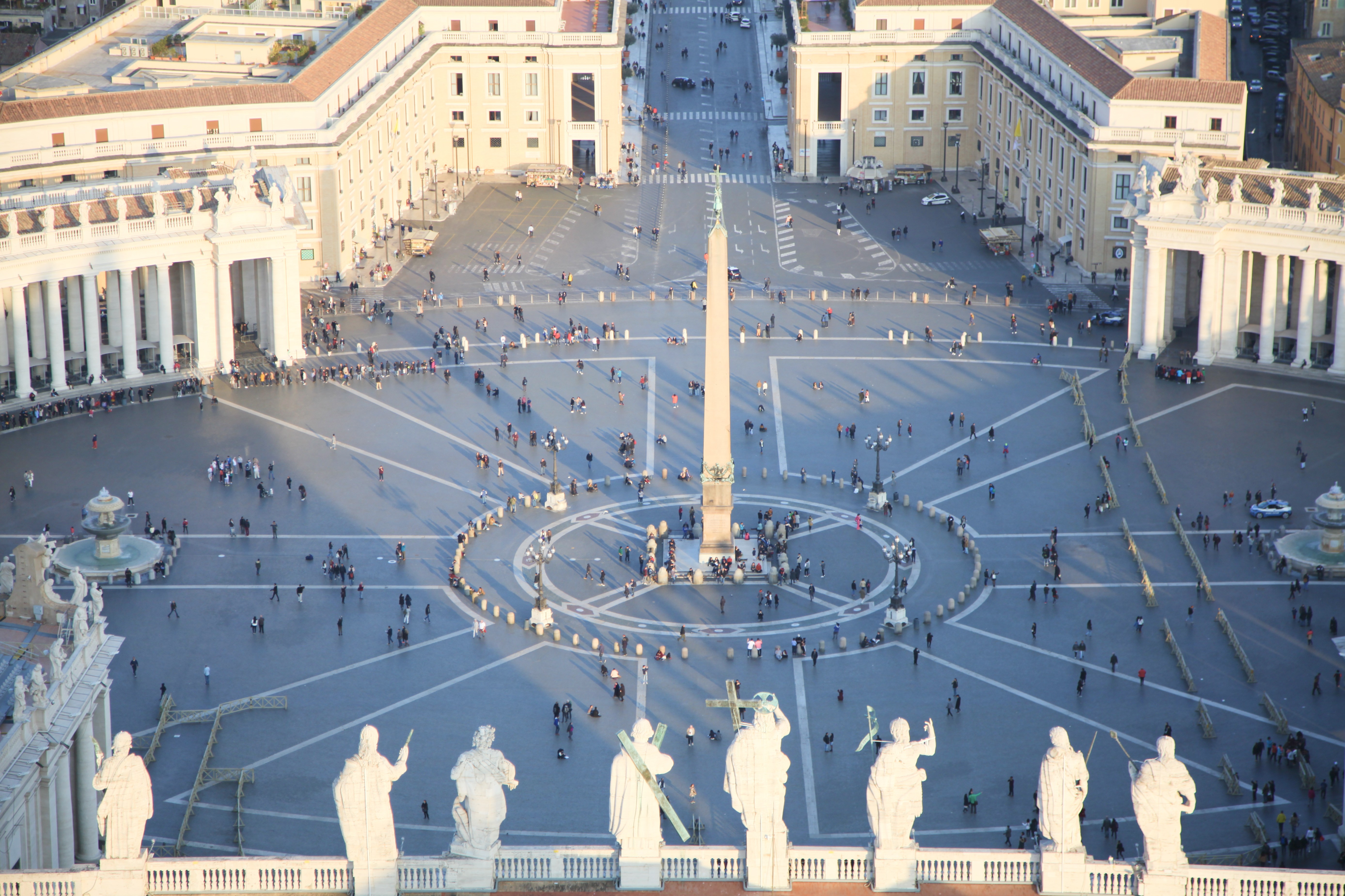
At the heart of Vatican City lies St. Peter’s Square, where Bernini’s sweeping colonnade, 284 columns and 88 pilasters arranged in an elegant ellipse, creates a sense of unity and shelter around the ancient Egyptian obelisk and its flanking fountains by Maderno and Bernini; above, 140 statues of saints stand as silent witnesses to centuries of faith, best appreciated in the gentle glow of morning or late afternoon light when the space feels both grand and contemplative. Beyond the square’s architectural embrace, St. Peter’s Basilica rises with monumental grace: its marble floor patterns draw the eye toward Michelangelo’s Pietà, a study in tender sorrow, and onward to Bernini’s soaring Baldacchino, which crowns the papal altar in bronze splendor. The nave’s luminous mosaics recall countless pilgrims’ devotions, while the dome, accessible via a narrow ascent, unfolds panoramic views of Rome’s terracotta rooftops and distant hills, reminding solo visitors of the city’s layered history. In this unique christian church you can have an intimate encounter with art, architecture, and spirituality in a setting where every detail resonates with meaning.
A Historic Path to St. Peter's Basilica: Via della Conciliazione
Via della Conciliazione is a historic and symbolic avenue, constructed between two iconic landmarks of Rome: St. Peter’s Basilica and Castel Sant’Angelo. Built in the 1930s, this wide, open street was designed to link the Vatican directly with the heart of Rome, symbolizing the resolution of the conflict between the Holy See and the Italian state through the Lateran Treaty.
The wide space offers a sense of connection between the Vatican and Rome, providing a calm and reflective moment in your solo exploration.At the end of the street, Piazza Pia, a modern square created for the 2025 Jubilee, offers a peaceful space to take a break, with stunning views of Castel Sant'Angelo in the distance. This is the perfect street to witness Rome’s history, architecture, and beautiful sightseeing by yourself.
The Unmissable View of Castel Sant'Angelo you can’t miss
Castel Sant'Angelo, perched along the Tiber River, is one of Rome’s most iconic landmarks, perfect for solo travelers on their own. Arriving from St. Peter’s Square along Via della Conciliazione, it stands offers a scenic, historic route leading to this imposing fortress.Originally built as a mausoleum for Emperor Hadrian in 135 AD, the castle has transformed over the centuries, serving as a papal residence and now a museum. Its circular design, crowned with the statue of the Archangel Michael, stands prominently against the skyline, providing a glimpse into ancient Roman defense. Across the Tiber, Ponte Sant'Angelo connects the castle to the rest of the city. Built by Hadrian, the bridge is lined with ten angel statues designed by Bernini, adding grandeur to your walk over the river.
Chiostro del Bramante and Santa Maria della Pace: A Peaceful Retreat in Rome's Heart
The Chiostro del Bramante is a serene and captivating Renaissance cloister nestled in the heart of Rome. Designed by the renowned architect Donato Bramante in the late 15th century, this architectural gem is also a peaceful respite away from the bustling streets of the city. Its geometric design creates a sense of balance and tranquility, making it an ideal spot to pause and reflect. Today, the cloister serves as both a cultural space and a gallery, often hosting modern art exhibitions. But beyond the exhibitions, the real charm lies in the building’s historical significance and its exquisite architecture. The space is designed to evoke a feeling of serenity and beauty, making you feel like in another era. The exhibitions take place inside, in the peaceful garden framed by a historic setting. Have a drink at the charming café located within the cloister, and relax in the heart of this elegant Renaissance space.
At a short distance from it, there is Santa Maria della Pace, (“Pace” means Peace). This charming church, built in the early 16th century, is known for its Baroque façade and the peaceful ambiance it provides. The church commemorates a significant Treaty of Peace in Renaissance Italy that ended a period of war between the major Italian states. The church’s stunning interior features works by renowned artists, including a beautiful fresco by Raphael, depicting the Sibyls and the Prophets. Santa Maria della Pace is a wonderful example of how art and architecture blend to create a space for reflection and worship. Both the Chiostro del Bramante and Santa Maria della Pace are hidden gems of great historical and artistic value, and can be places of peaceful breaks in your day in Rome.
Piazza Navona: A Lively Baroque Stage in Rome
Piazza Navona, one of Rome’s most beloved squares, is a powerful blend of art, history, and everyday Roman life. Built on the site of the ancient Stadium of Domitian, its long, oval shape still echoes the outline of the original Roman arena, where athletic contests once thrilled the crowds. Today, it is better known for the dramatic Fountain of the Four Rivers by Gian Lorenzo Bernini standing at its center. Its swirling figures represent the Nile, Danube, Ganges, and Rio de la Plata, all crowned by an ancient Egyptian obelisk. Surrounding the square are elegant palazzi and the church of Sant’Agnese in Agone, designed in part by Borromini, whose soft curves and classical façade contrast with Bernini’s dynamic energy. Street artists, musicians, and cafés fill the space with movement and sound, creating a festive yet relaxed atmosphere.
The Pantheon: Tips to Witness a Timeless Monument
The Pantheon is remarkably easy to reach and pairs well with nearby sites like Piazza Navona or the Trevi Fountain. Located in Piazza della Rotonda, it’s just a 5-minute away from Piazza Navona along Via Giustiniani or a 10-minute away from the Trevi Fountain via Via del Seminario. As for 2025, to enter the Pantheon there's a small ticket fee for tourists, so check ahead the availability and consider arriving early in the morning to avoid lines and experience the calm before the midday crowds arrive. Once inside, take your time to admire the coffered dome and the incredible oculus, and don’t miss the tomb of Raphael, master of the Renaissance. Piazza della Rotonda is also known for its café and restaurants surrounding it, grab an espresso at one of the cafés and take in the view of the temple’s massive columns as street performers and fellow travelers fill the lively space.
Trevi Fountain: A Magical Pause in the Heart of Rome
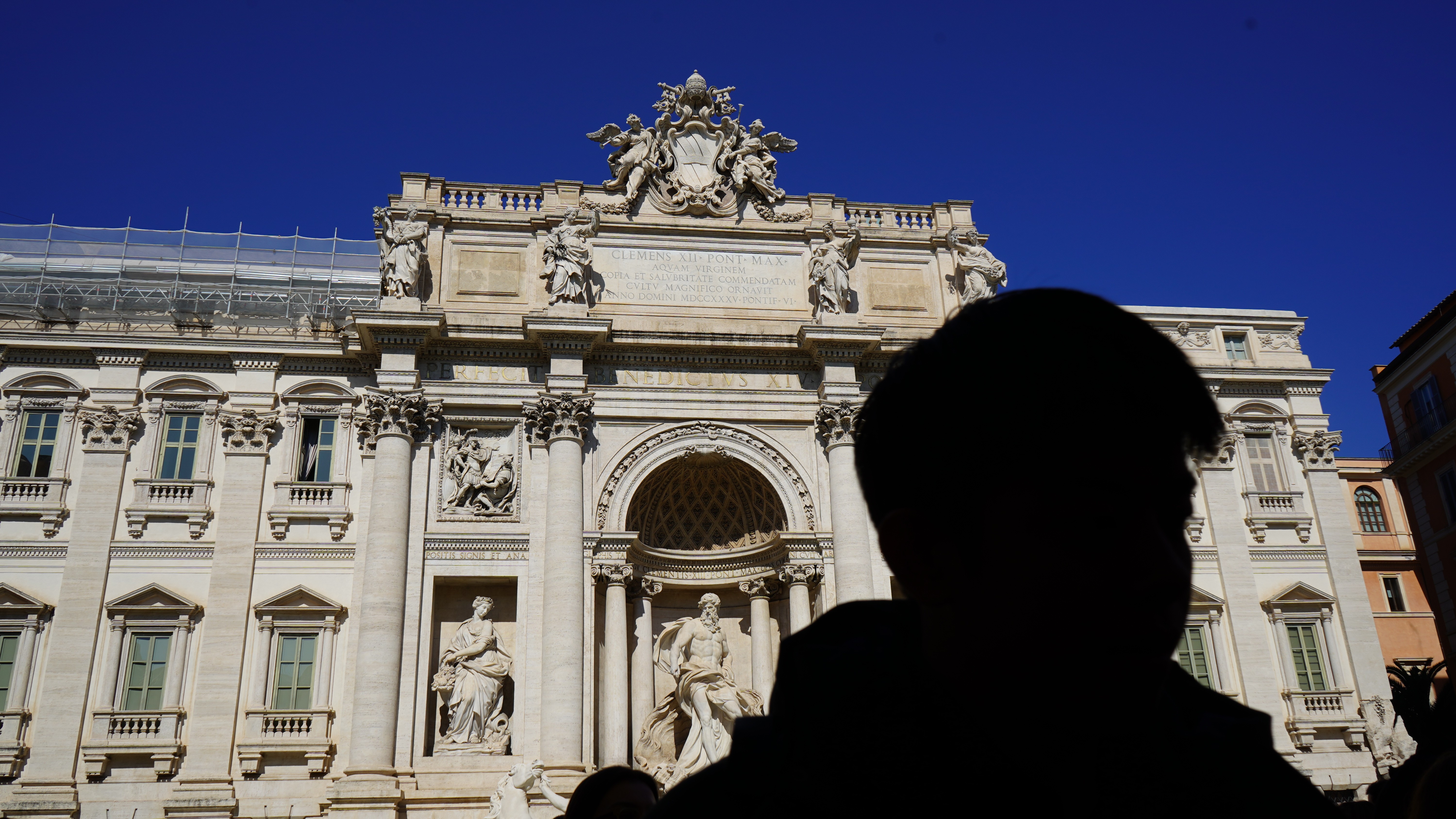
From the Pantheon, the Trevi Fountain is just a pleasant 10-minute away from Rome’s charming streets, head east along Via del Seminario, then follow signs to Via delle Muratte. The route winds past gelato shops and small piazzas. Trevi Fountain is nestled into a small piazza, its grand scale almost hidden until the last turn. We suggest being there in the early morning or after 9 PM to witness its charm at its fullest, to snap a photo or quietly making the traditional coin toss without the daytime crowds. There are no seating areas, but you can perch on the edge of the fountain or sit on nearby steps while soaking in the scene.
Our categories:
You may also be interested ...
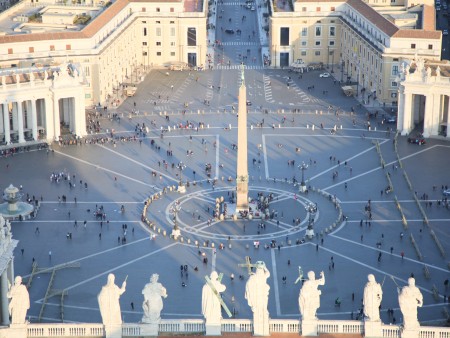
Vatican Private Tour with Sistine Chapel & St. Peter's Basilica: Renaissance’s Wonders
Private tour
Discover with a skip the line Private Vatican Tour the Sistine Chapel, Vatican Museums and St Peter’s Basilica
starting from: € 275
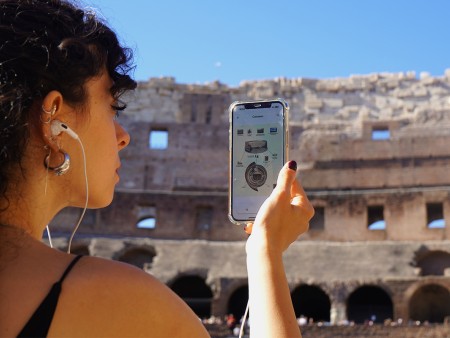
Colosseum Guided Audio Tour with Roman Forum and Palatine Hill
Private tour
Discover Ancient Rome’s secrets and history with our immersive Colosseum guided audio tour, rich in image and content
starting from: € 51 € 42